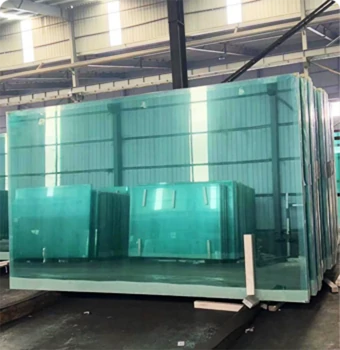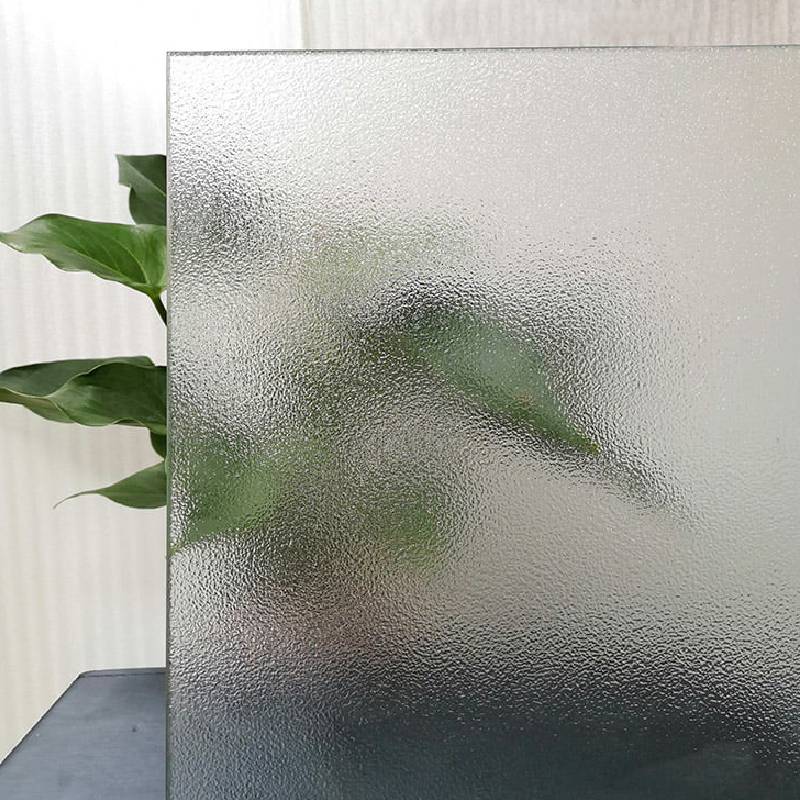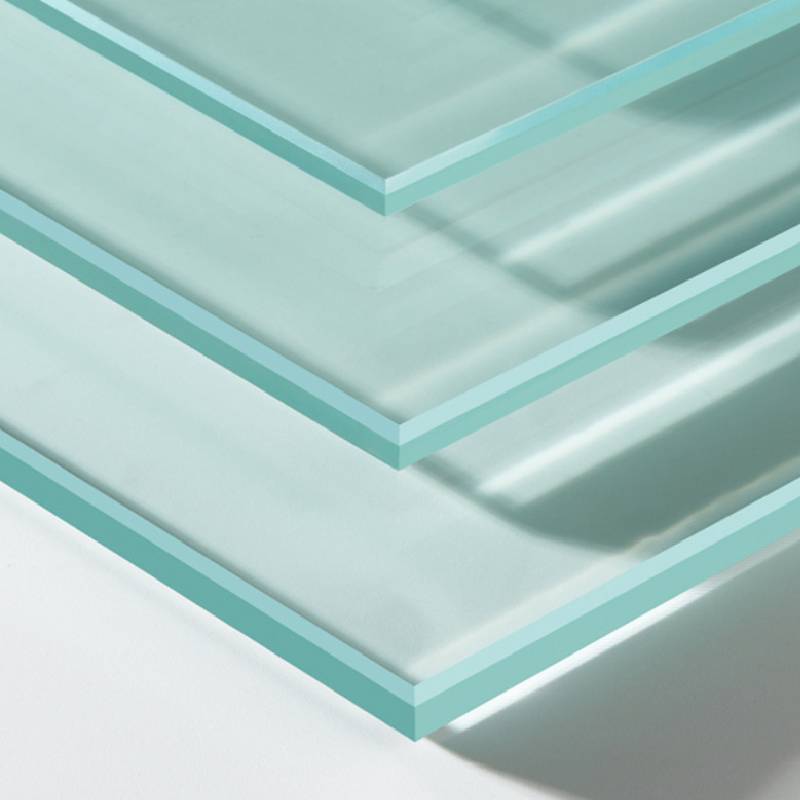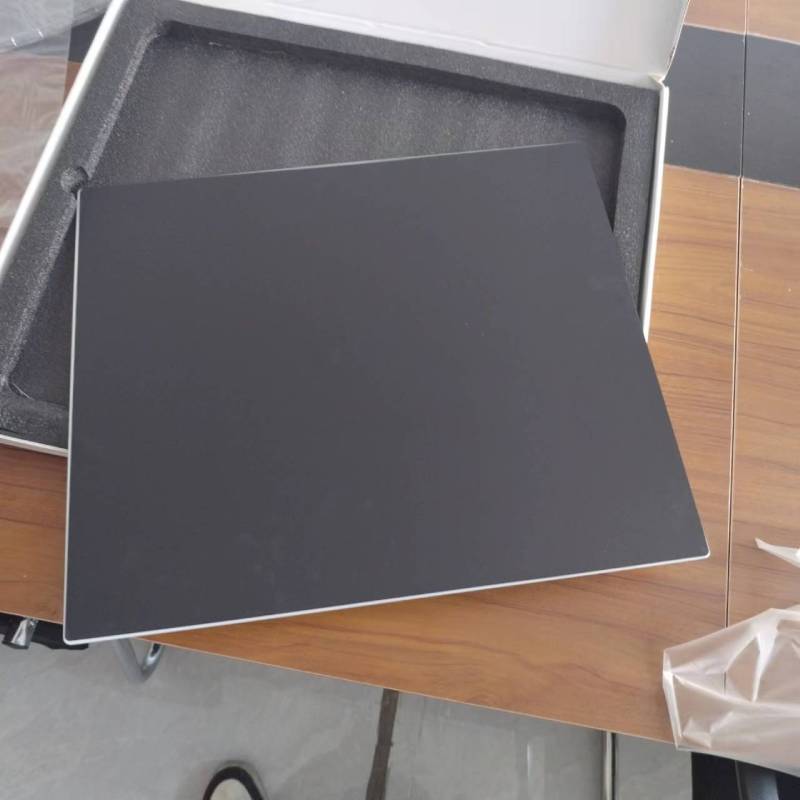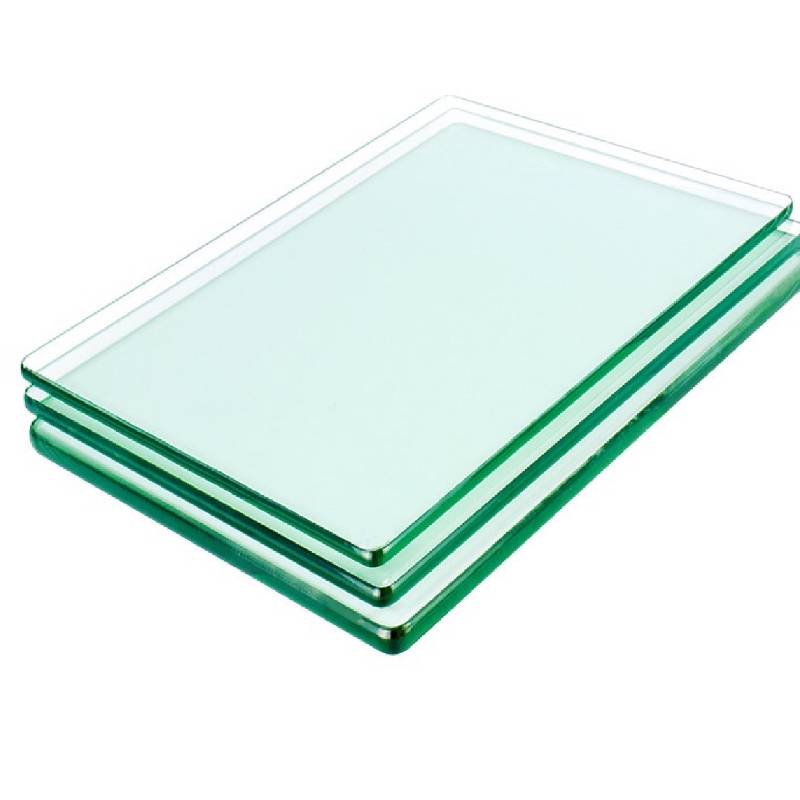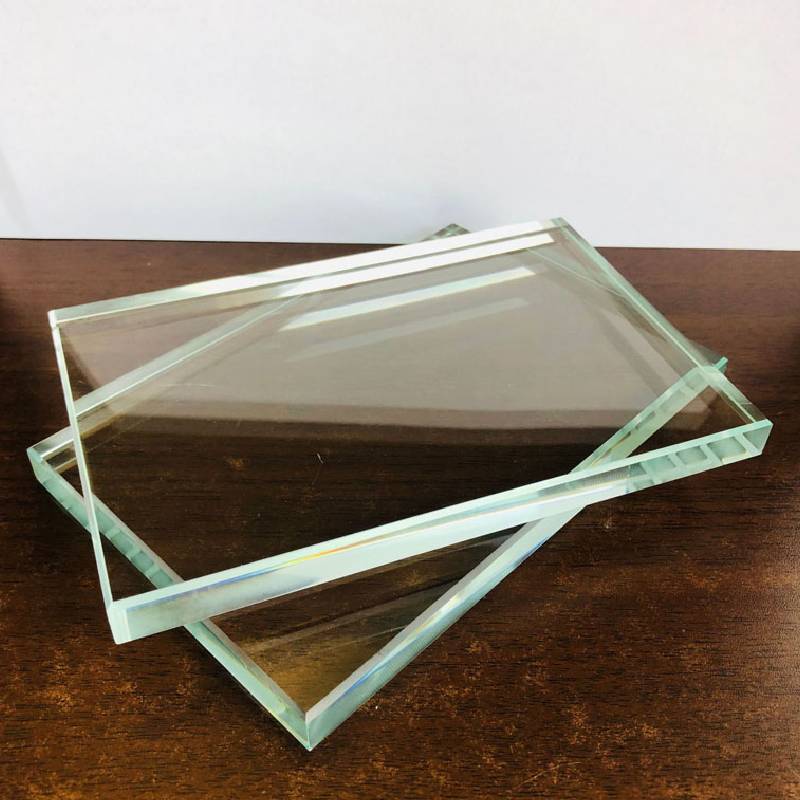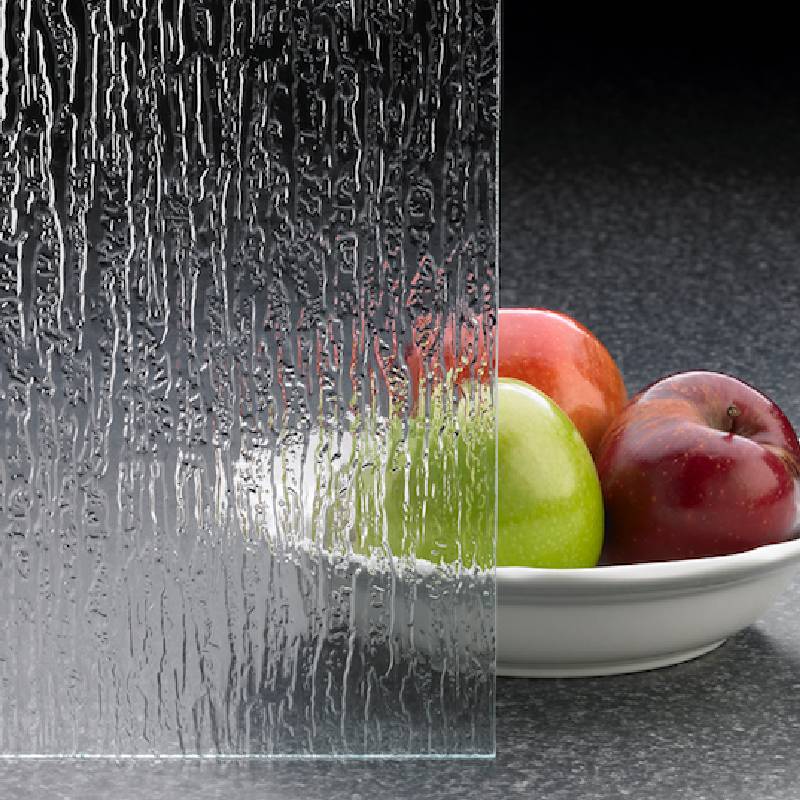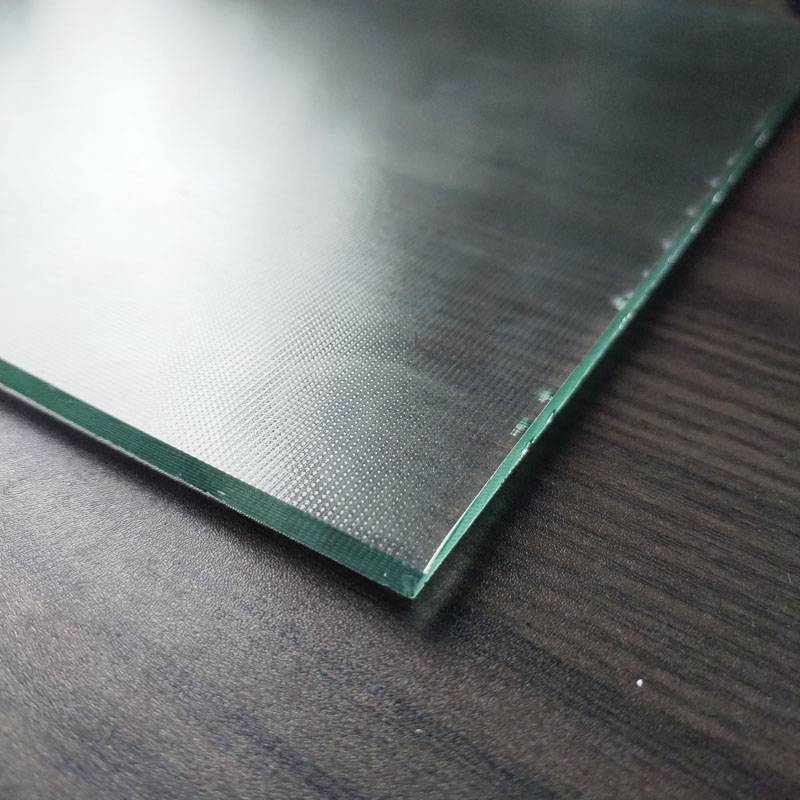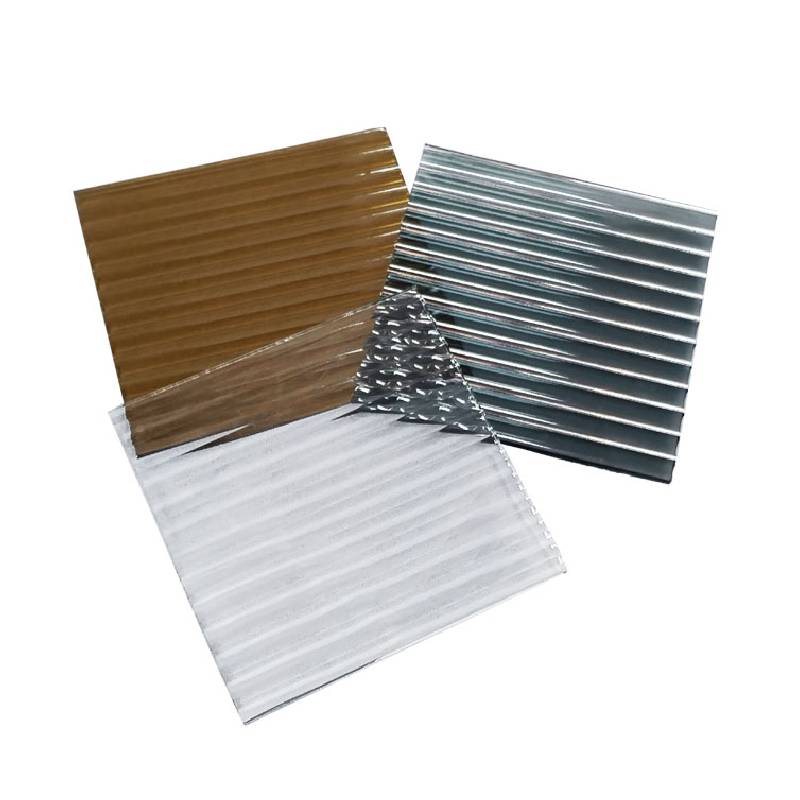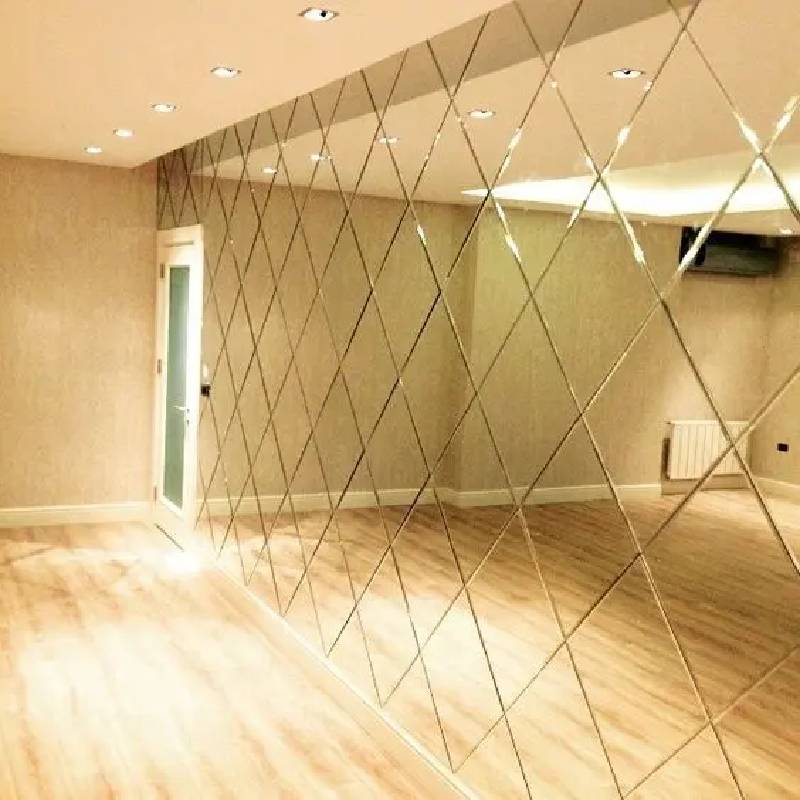Float glass means that the raw materials are melted at high temperature in the furnace. The molten glass continuously flows from the furnace and floats on the surface of the relatively dense tin liquid. Under the action of gravity and surface tension, the glass liquid spreads on the tin liquid surface. It is opened, flattened, and the upper and lower surfaces are formed to be smooth, hardened, and cooled before being led to the transition roller table. The rollers on the roller table rotate, pulling the glass ribbon out of the tin bath and into the annealing kiln. After annealing and cutting, flat glass products are obtained. The biggest feature of float glass is that its surface is hard, smooth, and flat. Especially when viewed from the side, the color is different from ordinary glass. It is white and the object is not distorted after reflection. In addition, due to the relatively good thickness uniformity, the transparency of its products is also relatively strong. It is precisely because of this transparency that it has a wider field of view. The broad field of view allows float glass to be used in many fields.
The production process of float glass is completed in a tin bath where protective gas (N2 and H2) is introduced. Molten glass continuously flows from the tank kiln and floats on the surface of the relatively dense tin liquid. Under the action of gravity and surface tension, the molten glass spreads and flattens on the tin liquid surface, forming an upper and lower surface that is smooth, hardened, and cooled. Then he was led to the transition roller table. The rollers on the roller table rotate, pulling the glass ribbon out of the tin bath and into the annealing kiln. After annealing and cutting, flat glass products are obtained. Compared with other forming methods, the advantages of float method are: it is suitable for high-efficiency manufacturing of high-quality flat glass, such as no corrugation, uniform thickness, smooth upper and lower surfaces, and parallel to each other; the scale of the production line is not limited by the forming method, and the energy per unit product Low consumption; high utilization rate of finished products; easy to scientifically manage and realize full-line mechanization and automation, high labor productivity; continuous operation cycle can last for several years, which is conducive to stable production; can provide suitable conditions for online production of some new varieties, such as Electric float reflective glass, spray film glass during annealing, cold end surface treatment, etc.
Float glass is widely used and is divided into tinted glass, float silver mirror, float white glass, etc. Among them, ultra-white float glass has a wide range of uses and broad market prospects. It is mainly used in the fields of high-end buildings, high-end glass processing and solar photovoltaic curtain walls, as well as high-end glass furniture, decorative glass, imitation crystal products, lighting glass, precision electronics industries, Special buildings, etc. Float glass has relatively good thickness uniformity and relatively strong transparency. Therefore, after tin surface treatment, it is relatively smooth. Under the action of smoothing, flame and polishing, it forms a surface that is relatively neat and flat. Glass with better strength and stronger optical properties. This kind of float glass has the characteristics of good transparency, brightness, purity, and bright indoor light. It is also the best choice for building doors, windows, and natural lighting materials. It is also one of the most widely used building materials. one.
The history of float glass can be traced back to the late 1950s. The British Pilkington Glass Company announced to the world that it had successfully developed the float forming process for flat glass. This was a revolution in the original grooved top forming process. However, the Western technology blockade at that time made China's float glass development and production have to take the path of self-reliance and independent innovation. In May 1971, the former Ministry of Building Materials Industry decided to conduct float process industrial trials in Luobo. Glass experts from all over the country gathered in Luobo, and more than a thousand employees of Luobo participated in the war. On September 23, 1971, under the guidance of department leaders and relevant experts, and with the full cooperation of fraternal units, the cadres and workers of Luoyang University worked together for more than three months and finally successfully built the first float. The glass production line produced my country's first float glass. From 1971 to 1981, CLFG implemented large-scale technical transformation on this line three times. The melting capacity of the production line reached 225 tons, the plate width exceeded 2 meters, and the overall yield reached 76.96%. At the end of 1978, In early 1979, thinner 4 mm glass was stably produced. The technology and equipment of "Luoyang Float Glass Process" were also improved day by day, and the technical level was continuously improved.
Il-vantaġġi tal-ħġieġ float huma prinċipalment riflessi fl-aspetti li ġejjin: l-ewwel, għandu flatness tajba u l-ebda ripples ta 'l-ilma; it-tieni, ir-ramel tal-kwarz mineral magħżul għandu materja prima tajba; it-tielet, il-ħġieġ prodott huwa pur u għandu trasparenza tajba; finalment, l-istruttura Kompatt, tqila, bla xkiel għall-mess, itqal minn pjanċa ċatta għal kull metru kwadru ta 'l-istess ħxuna, faċli biex tinqata' u mhux faċli biex tinkiser. Dawn il-vantaġġi jagħmlu l-ħġieġ float użat ħafna fil-kostruzzjoni, karozzi, dekorazzjoni, għamara, teknoloġija tal-industrija tal-informazzjoni u industriji oħra.
- Ħxuna tal-ħġieġ float
Ħxuna regolari 3mm, 4mm, 5.5mm, 6mm, 8mm, 10mm, 12mm
Ultra-rqiqa 1.2mm, 1.3mm, 1.5mm, 1.8mm, 2mm, 2.3mm, 2.5mm
Ħoxna żejda 15mm, 19mm
Daqs 1220*1830mm, 915*2440mm, 915*1220mm, 1524*3300mm, 2140*3300mm, 2140*3660mm, 2250*3300mm, 2440*3660mm
 Afrikan
Afrikan  Albaniż
Albaniż  Amhariku
Amhariku  Għarbi
Għarbi  Armenjan
Armenjan  Ażerbajġani
Ażerbajġani  Bask
Bask  Belarussu
Belarussu  Bengali
Bengali  Bosnijan
Bosnijan  Bulgaru
Bulgaru  Katalan
Katalan  Cebuano
Cebuano  Korsiku
Korsiku  Kroat
Kroat  Ċek
Ċek  Daniż
Daniż  Olandiż
Olandiż  Ingliż
Ingliż  Esperanto
Esperanto  Estonjan
Estonjan  Finlandiż
Finlandiż  Franċiż
Franċiż  Friżjan
Friżjan  Galizjan
Galizjan  Ġorġjan
Ġorġjan  Ġermaniż
Ġermaniż  Grieg
Grieg  Guġarati
Guġarati  Kreol Ħaitjan
Kreol Ħaitjan  hausa
hausa  Ħawajjan
Ħawajjan  Ebrajk
Ebrajk  Le
Le  Miao
Miao  Ungeriż
Ungeriż  Iżlandiż
Iżlandiż  igbo
igbo  Indoneżjan
Indoneżjan  Irlandiż
Irlandiż  Taljan
Taljan  Ġappuniż
Ġappuniż  Ġavaniż
Ġavaniż  Kannada
Kannada  każak
każak  Khmer
Khmer  Rwandan
Rwandan  Korean
Korean  Kurdi
Kurdi  Kirgiż
Kirgiż  TB
TB  Latin
Latin  Latvjan
Latvjan  Litwan
Litwan  Lussemburgiż
Lussemburgiż  Maċedonjan
Maċedonjan  Malgashi
Malgashi  Malajan
Malajan  Malajalam
Malajalam  Malti
Malti  Maori
Maori  Marathi
Marathi  Mongoljan
Mongoljan  Il-Mjanmar
Il-Mjanmar  Nepaliż
Nepaliż  Norveġiż
Norveġiż  Norveġiż
Norveġiż  Oċċitan
Oċċitan  Pashto
Pashto  Persjan
Persjan  Pollakk
Pollakk  Portugiż
Portugiż  Punġabi
Punġabi  Rumen
Rumen  Russu
Russu  Samoan
Samoan  Galliku Skoċċiż
Galliku Skoċċiż  Serb
Serb  Ingliż
Ingliż  Shona
Shona  Sindhi
Sindhi  Sinħaliż
Sinħaliż  Slovakk
Slovakk  Sloven
Sloven  Somali
Somali  Spanjol
Spanjol  Sundaniż
Sundaniż  Swaħili
Swaħili  Svediż
Svediż  Tagalog
Tagalog  Taġik
Taġik  Tamil
Tamil  Tatar
Tatar  Telugu
Telugu  Tajlandiż
Tajlandiż  Tork
Tork  Turkmeni
Turkmeni  Ukrain
Ukrain  Urdu
Urdu  Uighur
Uighur  Użbek
Użbek  Vjetnamiż
Vjetnamiż  Welsh
Welsh  Għajnuna
Għajnuna  Jiddix
Jiddix  Joruba
Joruba  Żulu
Żulu 

